David Lindsay Roberts describes the founding of the Tabulating Machine Company — later IBM — 125 years ago on Dec. 3, 1896.
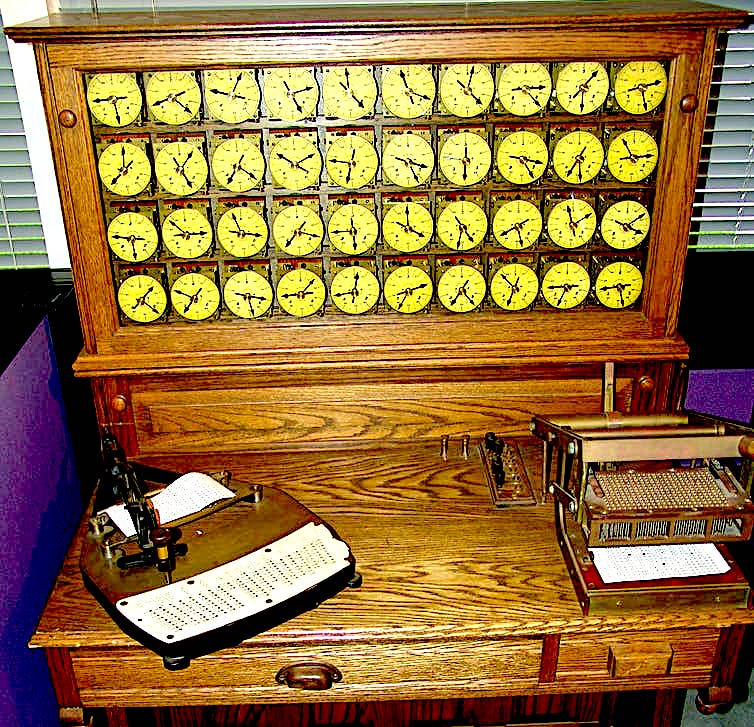
This electromechanical machine, used in the 1890 U.S. census, was the first automated data processing system. (Niall Kennedy/Flickr, CC BY-NC)
Prince George’s Community College
 The U.S. Constitution requires that a population count be conducted at the beginning of every decade.
The U.S. Constitution requires that a population count be conducted at the beginning of every decade.
This census has always been charged with political significance, and continues to be. That’s clear from the controversies in the run-up to the 2020 census.
But it’s less widely known how important the census has been in developing the U.S. computer industry, a story that I tell in my book, Republic of Numbers: Unexpected Stories of Mathematical Americans through History. That history includes the founding of the first automated data processing company, the Tabulating Machine Company, 125 years ago on Dec. 3, 1896.
Population Growth
The only use of the census clearly specified in the Constitution is to allocate seats in the House of Representatives. More populous states get more seats.
A minimalist interpretation of the census mission would require reporting only the overall population of each state. But the census has never confined itself to this.
A complicating factor emerged right at the beginning, with the Constitution’s distinction between “free persons” and “three-fifths of all other persons.” This was the Founding Fathers’ infamous mealy-mouthed compromise between those states with a large number of enslaved persons and those states where relatively few lived.
The first census, in 1790, also made non-constitutionally mandated distinctions by age and sex. In subsequent decades, many other personal attributes were probed as well: occupational status, marital status, educational status, place of birth and so on.
As the country grew, each census required greater effort than the last, not merely to collect the data but also to compile it into usable form. The processing of the 1880 census was not completed until 1888.
It had become a mind-numbingly boring, error-prone, clerical exercise of a magnitude rarely seen.
Since the population was evidently continuing to grow at a rapid pace, those with sufficient imagination could foresee that processing the 1890 census would be gruesome indeed without some change in procedure.
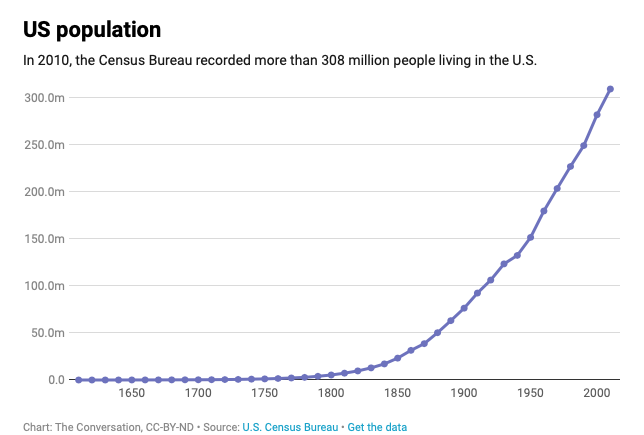 A New Invention
A New Invention
John Shaw Billings, a physician assigned to assist the Census Office with compiling health statistics, had closely observed the immense tabulation efforts required to deal with the raw data of 1880. He expressed his concerns to a young mechanical engineer assisting with the census, Herman Hollerith, a recent graduate of the Columbia School of Mines.
On Sept. 23, 1884, the U.S. Patent Office recorded a submission from the 24-year-old Hollerith, titled “Art of Compiling Statistics.”
By progressively improving the ideas of this initial submission, Hollerith would decisively win an 1889 competition to improve the processing of the 1890 census.
The technological solutions devised by Hollerith involved a suite of mechanical and electrical devices. The first crucial innovation was to translate data on handwritten census tally sheets to patterns of holes punched in cards. As Hollerith phrased it, in the 1889 revision of his patent application,
“A hole is thus punched corresponding to person, then a hole according as person is a male or female, another recording whether native or foreign born, another either white or colored, &c.”
This process required developing special machinery to ensure that holes could be punched with accuracy and efficiency.
Hollerith then devised a machine to “read” the card, by probing the card with pins, so that only where there was a hole would the pin pass through the card to make an electrical connection, resulting in advance of the appropriate counter.
For example, if a card for a white male farmer passed through the machine, a counter for each of these categories would be increased by one. The card was made sturdy enough to allow passage through the card reading machine multiple times, for counting different categories or checking results.
The count proceeded so rapidly that the state-by-state numbers needed for congressional apportionment were certified before the end of November 1890.
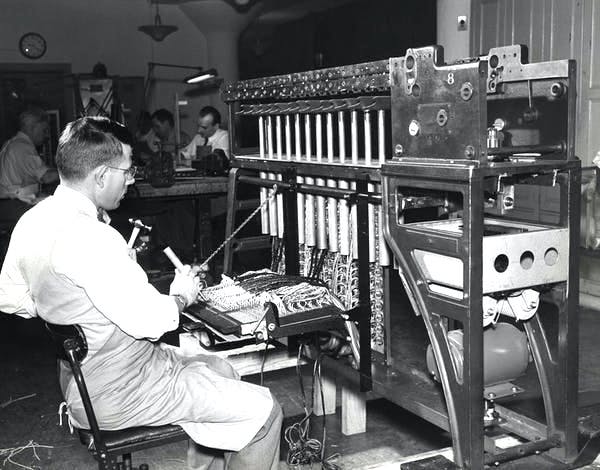
This “mechanical punch card sorter” was used for the 1950 census. (U.S. Census Bureau)
Rise of The Punched Card
After his census success, Hollerith went into business selling this technology. The company he founded, the Tabulating Machine Company, would, after he retired, become International Business Machines – IBM. IBM led the way in perfecting card technology for recording and tabulating large sets of data for a variety of purposes.
By the 1930s, many businesses were using cards for record-keeping procedures, such as payroll and inventory. Some data-intensive scientists, especially astronomers, were also finding the cards convenient. IBM had by then standardized an 80-column card and had developed keypunch machines that would change little for decades.
Card processing became one leg of the mighty computer industry that blossomed after World War II, and IBM for a time would be the third-largest corporation in the world. Card processing served as a scaffolding for vastly more rapid and space-efficient purely electronic computers that now dominate, with little evidence remaining of the old regime.
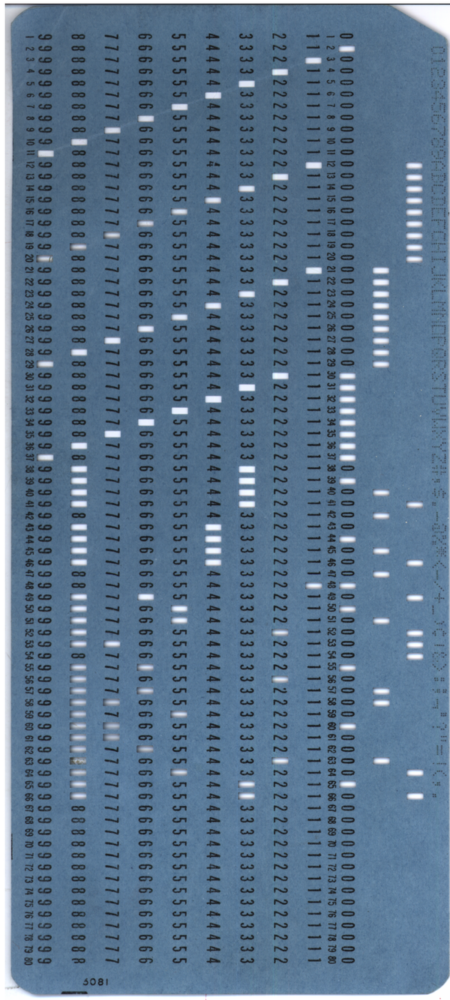
A blue IBM punch card. (Gwern/Wikimedia Commons)
Those who have grown up knowing computers only as easily portable devices, to be communicated with by the touch of a finger or even by voice, may be unfamiliar with the room-size computers of the 1950s and ’60s, where the primary means of loading data and instructions was by creating a deck of cards at a keypunch machine, and then feeding that deck into a card reader. This persisted as the default procedure for many computers well into the 1980s.
As computer pioneer Grace Murray Hopper recalled about her early career, “Back in those days, everybody was using punched cards, and they thought they’d use punched cards forever.”
Hopper had been an important member of the team that created the first commercially viable general-purpose computer, the Universal Automatic Computer, or UNIVAC, one of the card-reading behemoths. Appropriately enough, the first UNIVAC delivered, in 1951, was to the U.S. Census Bureau, still hungry to improve its data processing capabilities.
No, computer users would not use punched cards forever, but they used them through the Apollo Moon-landing program and the height of the Cold War. Hollerith would likely have recognized the direct descendants of his 1890s census machinery almost 100 years later.
David Lindsay Roberts is adjunct professor of mathematics, Prince George’s Community College.
This article is republished from The Conversation under a Creative Commons license. Read the original article.

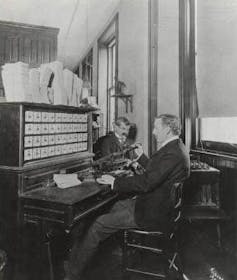
In the name of balance, let’s please remember that the first real (programmable) computer was the Colossus developed for Bletchley Park in the UK to decrypt the German Lorenz code during WW2. This work was kept secret until the last couple of decades (GCHQ still used this technology during the cold war) which means due recognition of this ground breaking work has never properly been acknowledged.
Hollerith also had a German Branch that did the 1933 Census for the RSHA / SS .This told Himmler`s SS exactly where All German Jewish Families lived. Later Concentration Camps that were Death Factories had Hollerith Machines to Count the Number of Gased, Cremated Prisoners. The Profits for Hollerith were paid into Swiss Banks and sent to America after the German Surrender.
As another commenter has already pointed out, a matter outside the scope of this article, which is not a comprehensive history of IBM.
The modern world remains enormously indebted to the West in general and the US in particular for coordinating and assembling the various constituting technologies that made the development of the indispensable computers possible if not also for the various fundamental researches contributing to their development and contemporary and on-going iterations. Even rising China cannot deny this fact !
Interesting article, especially regarding the contributions of Hollerith to development of the modern computer, but it leaves out some of the important history.
The “grandfather” of the computer industry was the weaver and inventor Joseph Jacquard, who at the very beginning of the 19th century invented the Jacquard loom, which was the first machine to use interchangeable punch cards to instruct a machine to perform automated tasks. Some of the old (non-digitalized) Jacquard looms are still in operation today – and I saw some operating at textile mills in Eastern Europe just a couple of years ago – it is amazing how punched cards or tape are used to create the most sophisticated patters in woven fabrics.
The Jacquard loom was also an inspiration not only later to Hollerith but also earlier in the 19th century to Charles Babbage planning to use perforated cards in his analytical engine (with the daughter of Lord Byron, Ada Lovelace, doing the programming).
In the development of IBM out of the old CTR, mention needs to be given to the visionary and super salesman Thomas Watson.
And there were also other major “big data” projects that accelerated development of the computer in addition to the census and the moon shot – for example, the Manhattan Project, where responsible scientists such as Oppenheimer and Feynman needed to develop significant improvements in punchcard computing technology in order to solve complex mathematical problems.
Just read the comments on the role of IBM and its Hollerith subsidiary in the Third Reich. In any event, old T.J. Watson was certainly no Nazi sympathizer (unlike, say, Henry Ford), but his aggressive sales teams were certainly looking to make sales where sales could be made. And probably from the standpoint of Hollerith, the German state had just another of those, you know, big data projects.
In the 1950 picture it looks like the tech is using a ball peen hammer and a punch to “adjust” the mechanical sorter.
That goes along with the actual bug (a moth I believe) removed from an early computer after it had been caught between the contacts of a relay causing a failure. My recollection of that photo is that the bug was scotch taped to a page of the service log. Things have changed.
That was funny, from Hopper. The use of “bug” to describe an engineering malfunction dates back to the 1800’s, likely well before 1878 when Thomas Edison used the term in a letter, indicating it was already in use, though he uses the term in quotes.
Quoting from “Wonderful Engineering”: The same year he wrote to Theodore Puskas and said, “It has been just so in all of my inventions. The first step is an intuition and comes with a burst, then difficulties arise—this thing gives out and [it is] then that “Bugs”—as such little faults and difficulties are called—show themselves and months of intense watching, study and labor are requisite before commercial success or failure is certainly reached.”
IBM, like Kodak, AT&T, DuPont and a handful of other big monopolies, did real research – in their heyday. Today, Google does a little, but most high tech monopolies do pitifully less real research. Apple is notorious for taking and customizing research from other organizations. “Small, high-capacity hard drives made the iPod portable music player possible. After scientists in France and Germany discovered a quantum electronic effect called giant magnetoresistance, and after the Department of Energy funded additional work at its laboratory in Illinois, researchers at IBM’s Almaden, California laboratory applied the effect to hard drive storage. Apple simply bought the drives.” (The Hollow Colossus, p. 144)
Without Hollerith/IBM technology, the Nazis would not have been able to efficiently manage the concentration camps…….
Yup. I was looking for that. The Nazis wanted added information and needed more data columns on the Hollerith cards. IBM came out with 80-column cards from a previous 30 or 40 (forgot which) or so columns. This later also became the business character width for screens and print outs (as we used to call them). Thomas Watson was awarded a medal by Hitler and there is even a picture with them at a dinner or presentation together. There is a big book on IBM which I have but can’t locate at the moment. And while IBM was restricted from doing business in the war, their money was kept to the side, for them to pick up after, as it the war had (almost) never happened (they weren’t the only big US companies, each of which kept working through their German front operations).